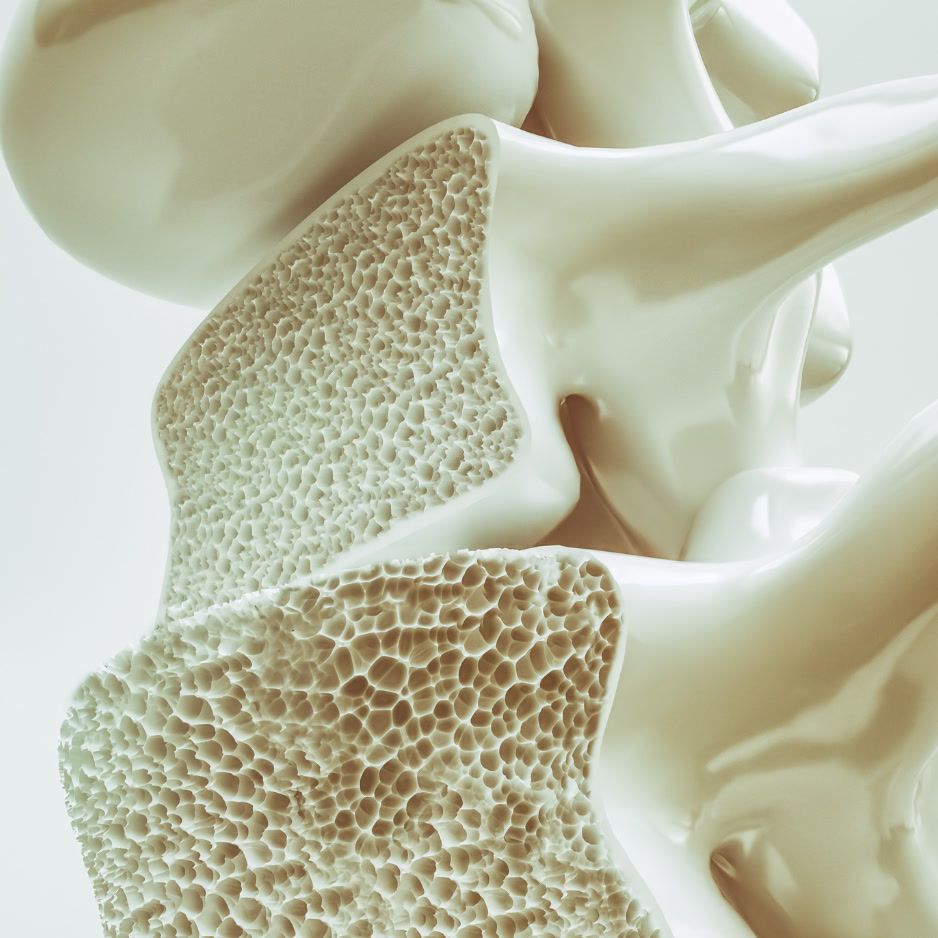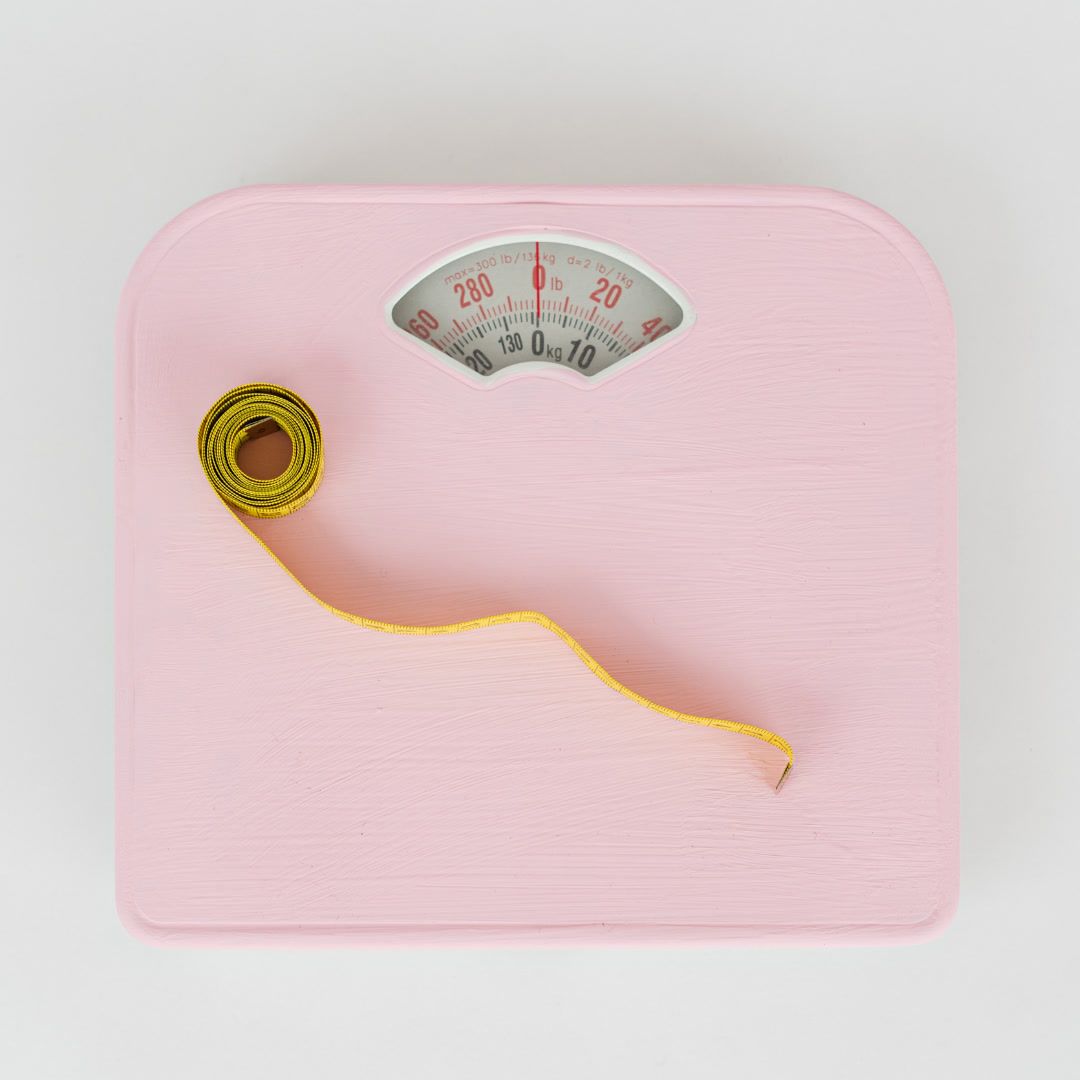Full Body Scans 101: MRI, CT, and DEXA Compared
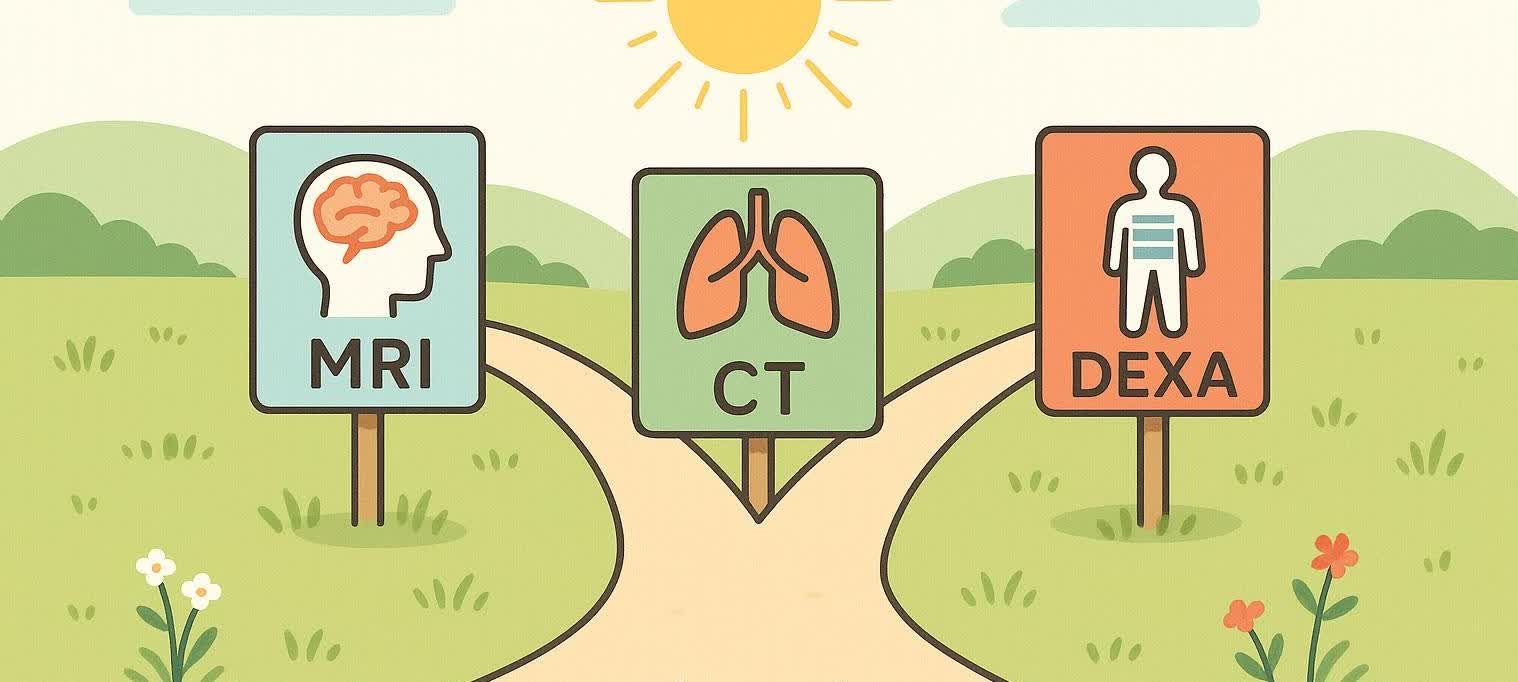
Full Body Scans 101: MRI, CT, and DEXA Compared
From TikTok influencers reclining in futuristic tubes to billboards promising “cancer detection in one hour,” the idea of a full body scan—typically an MRI or low-dose CT—has captured public imagination. These head-to-toe images can reveal silent tumors and heart risks, but they also trigger false alarms and rarely qualify for insurance coverage.
After we unpack the benefits and risks of MRI and CT full-body screening, we’ll compare them with DEXA body-composition scans—a lower-cost, ultra-low-radiation test for tracking fat, muscle, and bone health that many wellness seekers use alongside traditional imaging.
At-a-Glance: Whole-Body Imaging Options
| Imaging Modality | Radiation? | Typical Scan Time | What It Measures Best | Typical Price (USD) | Ideal Use Case |
|---|---|---|---|---|---|
| Whole-Body MRI | None | 45–90 min | Soft-tissue tumors, brain & spinal cord, joints | $1,300–$2,700 | High-Risk Cancer Syndromes, Detailed Soft-Tissue Survey |
| Whole-Body Low-Dose CT | 10–20 mSv (≈3–7 years of background exposure) | <10 min | Lung nodules, vascular calcification, bone lesions | $550–$1,000 | Rapid Trauma Screen, Coronary Calcium Scoring, Smokers |
| DEXA Body Composition | 0.003 mSv (≈9 hours of background exposure) | 6–10 min | Visceral fat, total body-fat %, lean mass, bone density | $40–$90 | Weight-Loss Tracking, Osteoporosis Risk, Athletic Performance |
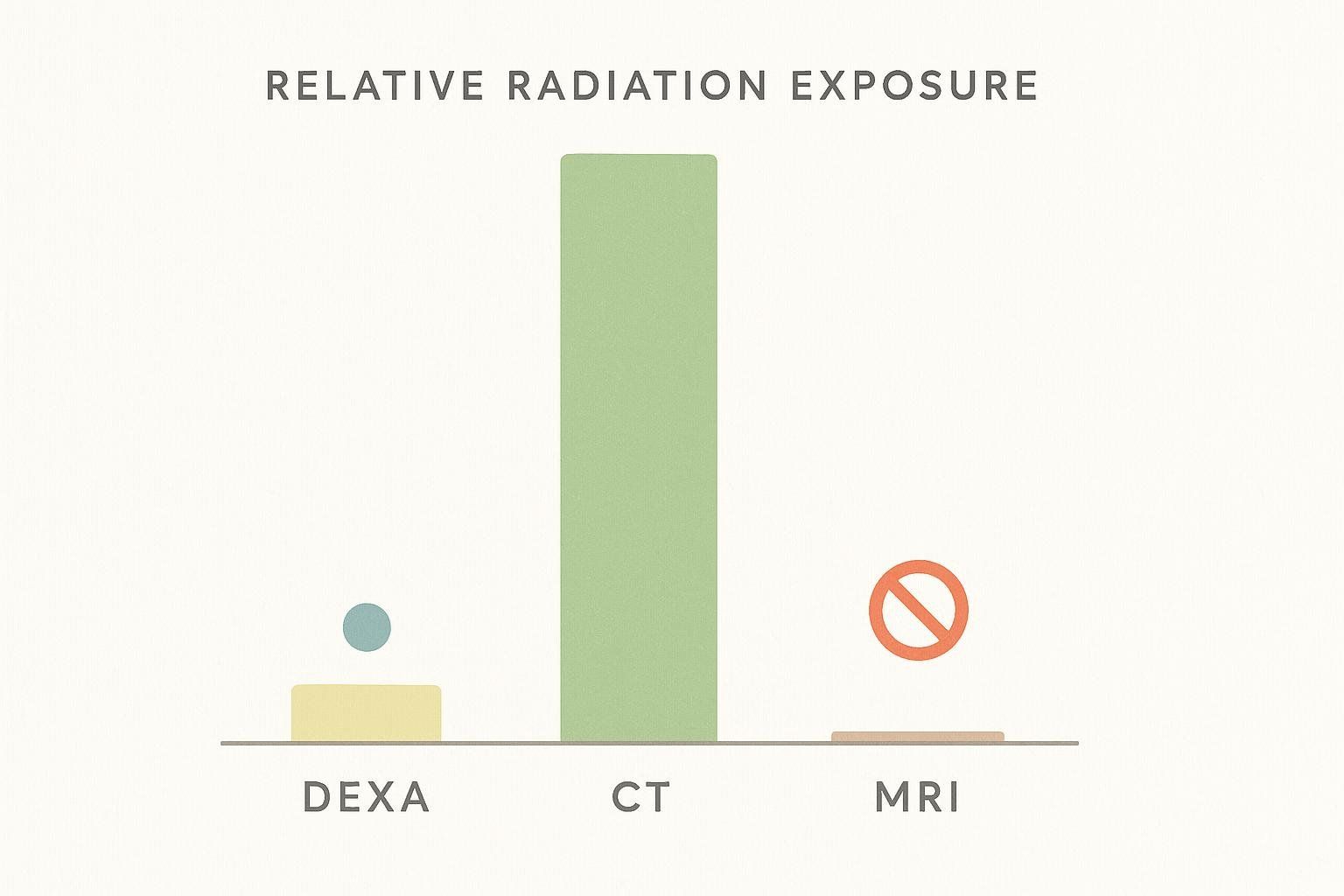
Radiation equivalents come from the National Cancer Institute CT fact sheet and the Health Physics Society dose FAQ.
MRI-Based Full-Body Scans
Magnetic resonance imaging (MRI) uses strong magnetic fields and radio-frequency pulses—no ionizing radiation—to create high-contrast pictures. The scanner works region by region—head and neck, chest, abdomen, pelvis—and software stitches those slices into one continuous, head-to-toe view.
Pros
• Radiation-free, safe for repeat follow-up
• Excellent soft-tissue detail (brain, liver, prostate)
• Emerging AI tools may flag subtle lesions
Cons
• 45–90-minute scan requires breath-holds and stillness
• Can miss tiny lung nodules (<4 mm)
• Pricey; insurance rarely covers preventive use
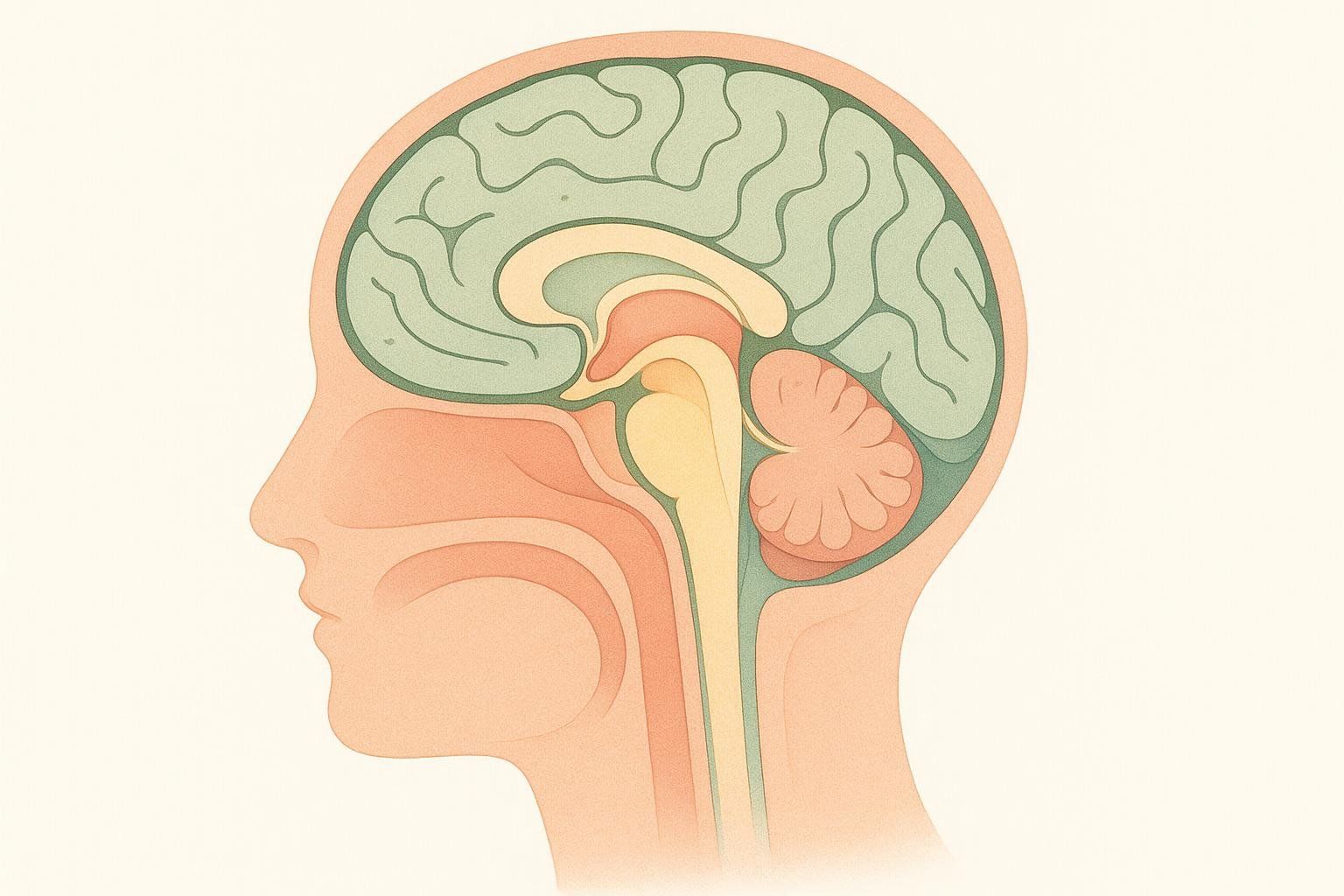
Low-Dose CT Full-Body Scans
Computed tomography (CT) rotates X-ray beams around you, then reconstructs 3-D slices. Even with dose-saving tech, a single scan delivers about 10–20 mSv—roughly 3–7 years of everyday background exposure (National Cancer Institute CT fact sheet).
Pros
• Whole body imaged in 10-30 minutes—ideal for trauma
• Superior for detecting lung nodules and vascular calcification
• Widely available
Cons
• Ionizing radiation carries a small theoretical cancer risk
• Lower soft-tissue contrast than MRI
• Same insurance and incidental-finding caveats
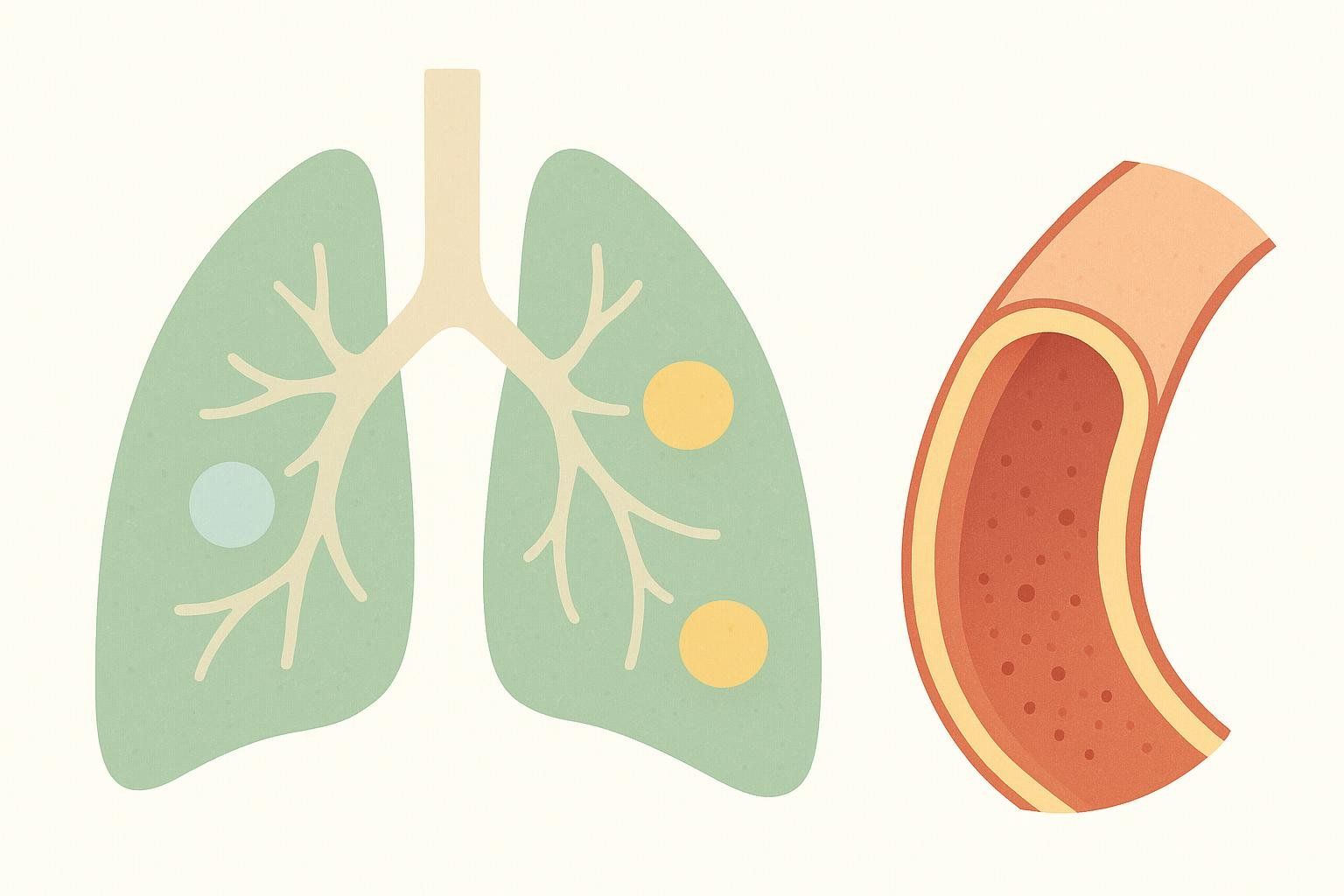
DEXA Body-Composition Scans
Dual-energy X-ray absorptiometry (DEXA) emits two very low-dose X-ray beams to differentiate bone, lean tissue, and fat. It is not a cancer screen, but it quantifies body-fat percentage, visceral fat, and bone density more precisely than any scale or bio-impedance gadget.
Pros
• Tiny radiation dose—about nine hours of background exposure (~0.003 mSv) (Health Physics Society dose FAQ)
• 10-minute appointment; open, flat table (no tube)
• Ideal for tracking obesity, muscle gain, osteoporosis risk
• Typically <$90 per scan
Cons
• Does not detect tumors or organ pathology
• Requires serial scans to show trends
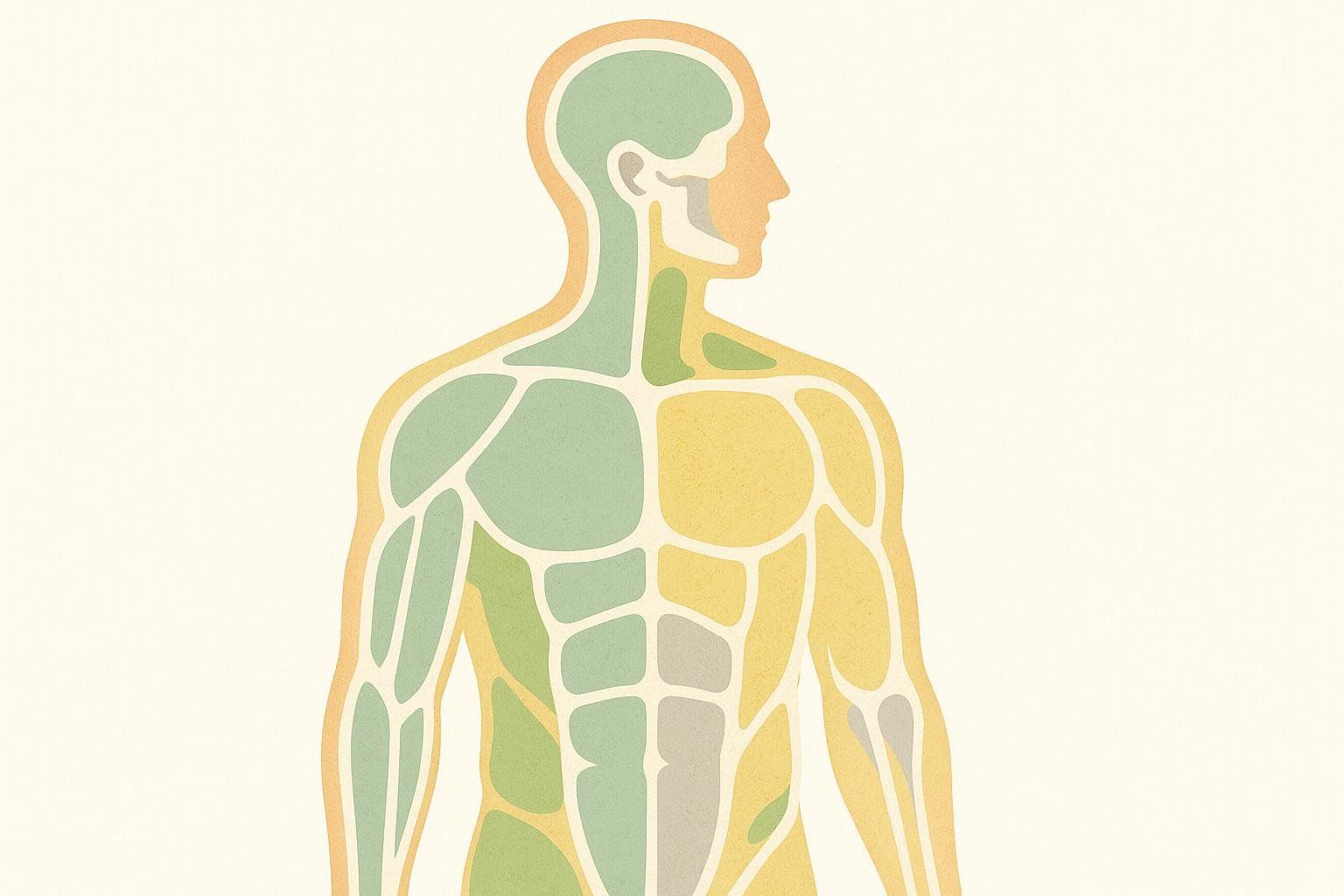
Who Might Consider MRI or CT Full-Body Screening?
Radiology societies reserve routine whole-body MRI/CT for specific high-risk groups such as:
• Genetic cancer syndromes (e.g., Li-Fraumeni, BRCA with prior cancers)
• Multiple myeloma staging or metastatic work-up
• Occupations with unusual exposures where early detection changes management (astronauts, certain first responders)
For average-risk adults, motivations usually include proactive longevity, strong family history, or executive convenience. Discuss personal risk factors with your physician before booking.
Potential Benefits—And the Evidence
| Marketing Claim | What Providers Promise | Independent Findings |
|---|---|---|
| Early cancer detection | “Find tumors before symptoms.” | Possible, but no randomized trial has shown lower mortality for average-risk adults (MD Anderson deep-dive). |
| Peace of mind | “Know what’s happening inside.” | About 30–40 % of scans reveal incidental findings; many prove benign—see the 2019 systematic review on incidental MRI findings in J Magn Reson Imaging. |
| Radiation-free (MRI) | “Safe annual monitoring.” | True for MRI; CT still involves ionizing radiation. |
| One-stop health snapshot | “Head-to-toe in an hour.” | Broad coverage, but lacks metabolic metrics like visceral fat quantified by DEXA. |
Incidental Findings in Context

The 2019 review of 5,373 symptom-free adults reported:
• 32 % had critical or indeterminate findings.
• 12 % were clinically significant.
• 16 % were false positives.
Each unexpected blip can set off a cascade of follow-up imaging, biopsies, and anxiety.

Key Risks & Limitations
- Radiation exposure (CT only). Whole-body CT averages 10–20 mSv—small but cumulative.
- False positives & overdiagnosis. Extra tests, cost, and stress.
- False reassurance. Small lesions can still be missed.
- Cost. $550–$2,700 per scan, typically self-pay.
- Questionable routine value. The ACR guidelines on whole-body CT screening state there is “no proven benefit” for annual scans in symptom-free, average-risk adults.
Cost Comparison
| Provider | Modality | Scan Time | Price (USD) | Notable Extras |
|---|---|---|---|---|
| Prenuvo | MRI | 60 min | $2,499 | AI heat-maps, limited body-comp add-on |
| Ezra | MRI (+ optional low-dose CT chest) | 30–60 min | $1,350–$2,695 | Membership payment plans |
| Craft Body Scan | Low-Dose CT | <10 min | $550–$1,000 | Coronary calcium focus |
| BodySpec DEXA | DEXA | 10 min | $45–$90 | Detailed body-comp & bone-density report |
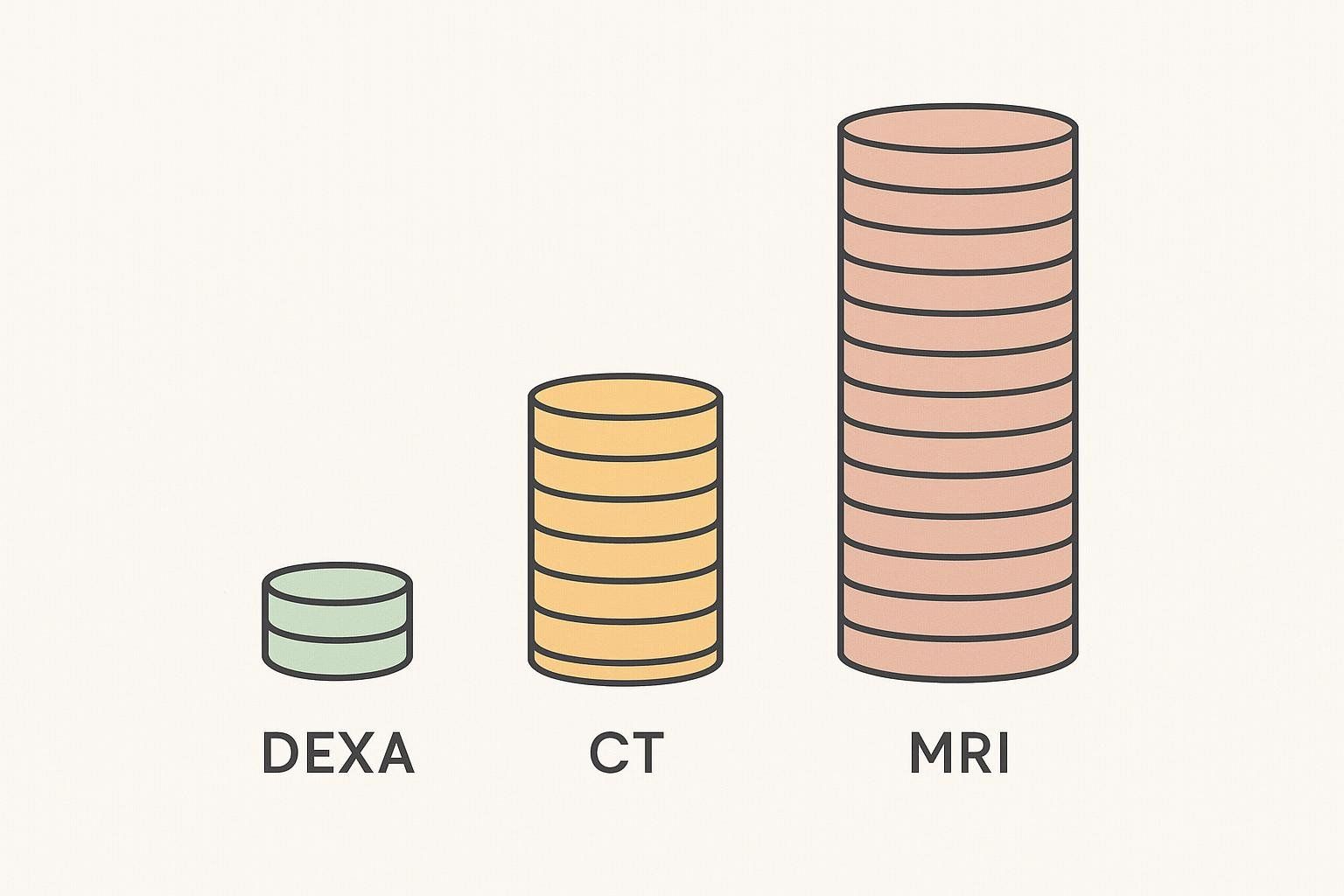
Why include DEXA? Many wellness seekers care more about long-term metabolic health than one-time tumor hunting—and a DEXA scan costs about 95 % less than a full-body MRI while delivering actionable data on fat, muscle, and bone.
What to Expect at the Appointment
MRI or CT
- Online health questionnaire
- Metal screening; fasting rarely required unless contrast is used
- Imaging: lie in an MRI tube for 45–90 minutes or on a CT table for <10 minutes
- Radiologist reads images; digital report typically arrives within a week
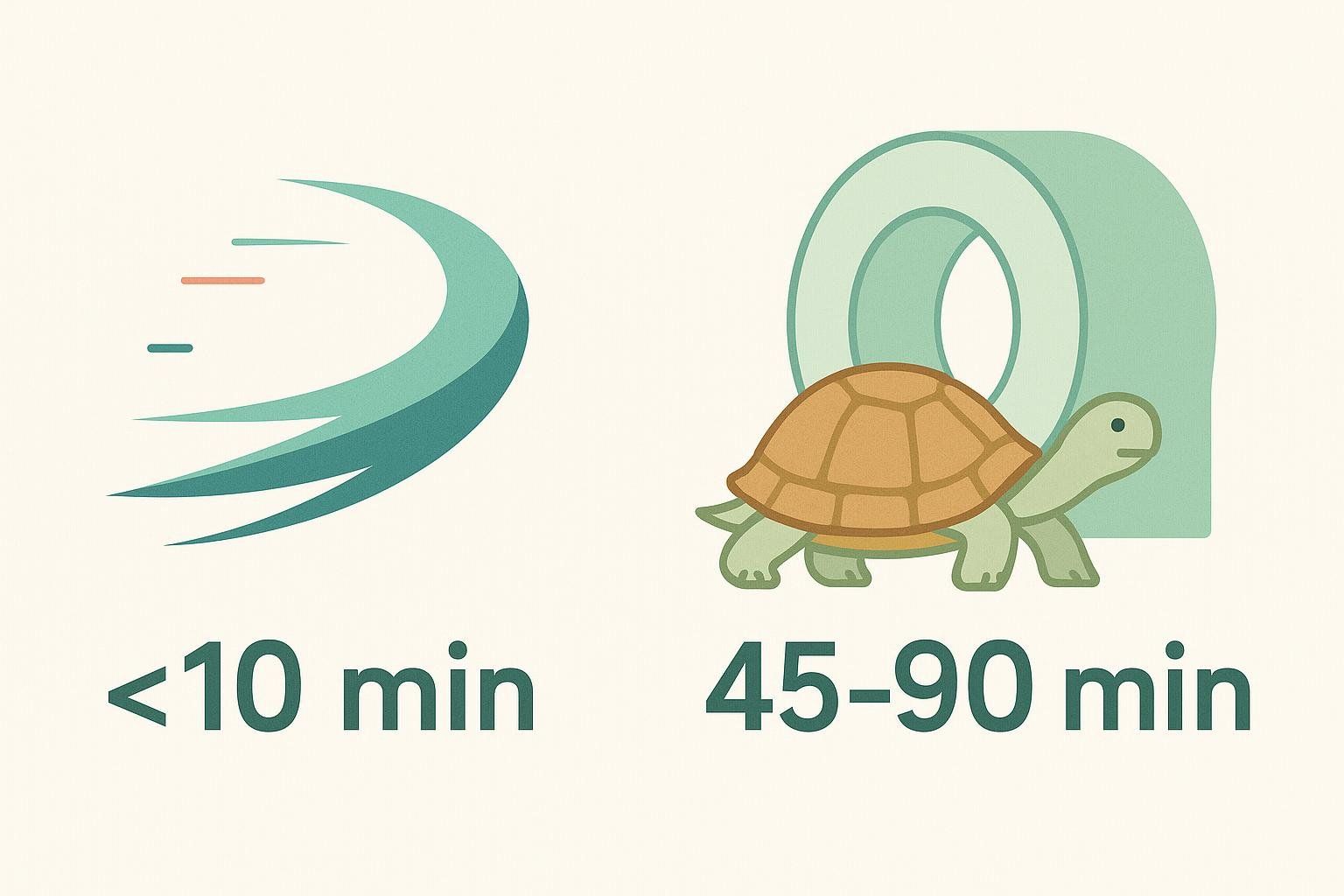
DEXA
- Wear comfortable clothing without metal
- Lie on an open, flat table for 6–10 minutes
- Leave with an instant report showing color-coded maps of fat, lean tissue, and bone density
Interpreting Your Results
• MRI/CT—all clear: Great—keep up standard screenings like colonoscopy and mammography.
• MRI/CT—indeterminate finding: Ask about likelihood of malignancy and whether short-interval follow-up is recommended.
• DEXA baseline: Compare to age- and sex-matched norms; set goals for reducing visceral fat or improving bone density. Repeat every 3–12 months to track progress.
Choosing the Right Tool for Your Goals
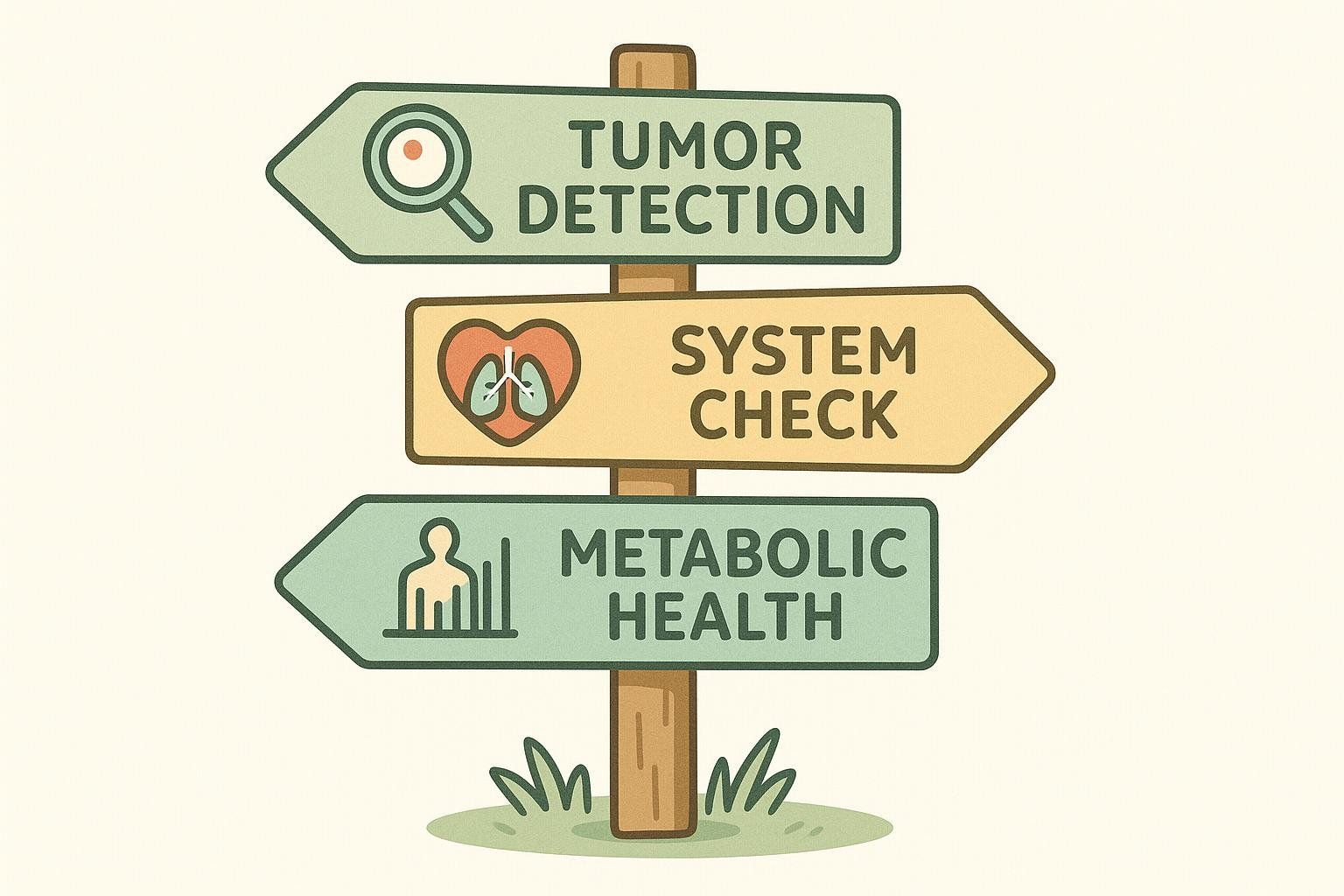
| Health Goal | Best-Fit Test | Why |
|---|---|---|
| Detect hidden tumors (high-risk individual) | Whole-body MRI ± CT | High soft-tissue contrast; MRI has no radiation |
| Rapid trauma or coronary calcium check | Low-Dose CT | Speed and vascular detail |
| Track fat loss, muscle gain, bone health | DEXA body-composition | Precise, inexpensive, ultra-low radiation |
Many people combine periodic standard DEXA scans for metabolic fitness with age-appropriate cancer screenings and reserve full-body MRI/CT for specific high-risk scenarios or physician-directed diagnostics.
Frequently Asked Questions
Does an MRI full-body scan require contrast dye?
Most preventive protocols are non-contrast. Some providers add gadolinium for vascular or cardiac images.
Can I do the scan if I have metal implants?
CT is generally safe. MRI eligibility depends on implant material—inform the provider beforehand.
How often should I repeat a full-body MRI or CT?
The value of routine annual scans for average-risk adults is debated; major guidelines, including the ACR document above, advise against it unless you have elevated risk factors.
Will a full-body scan replace standard screenings?
No. Colonoscopy, mammography, Pap smears, and regular DEXA scans have proven benefit. Whole-body MRI/CT hasn’t yet met that bar for average-risk adults.
Bottom Line
Whole-body MRI and CT scans are powerful technologies—especially useful for people with elevated genetic or occupational risk. They provide stunning images and, sometimes, lifesaving discoveries. They also introduce radiation (CT only), incidental findings, and significant cost.
Talk with your physician about your health goals, risk profile, and budget. Whether you opt for a high-resolution MRI, a rapid CT, a cost-friendly DEXA—or a combination—you’ll walk in informed and ready to act on the results.

